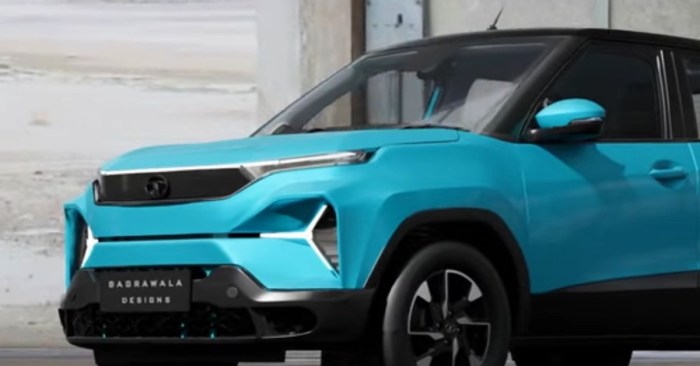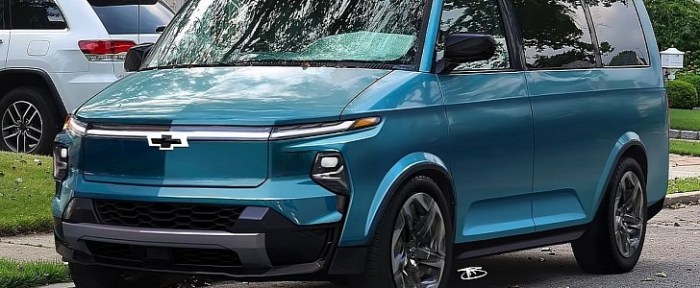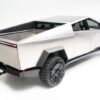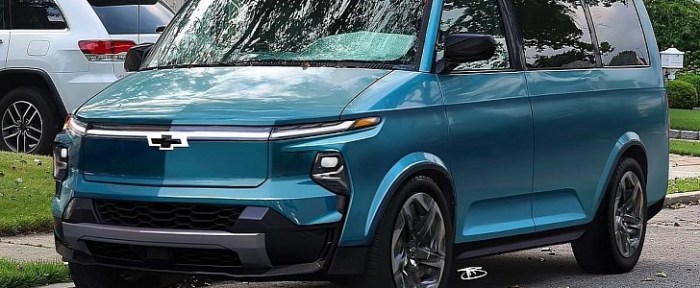The best tires for your EV have four unique challenges: performance, sustainability, safety, and technology. Electric vehicles, with their unique powertrains and regenerative braking systems, demand tires tailored to their specific needs. This isn’t just about grip; it’s about balancing performance, environmental impact, safety features, and the constant evolution of technology. Traditional tires simply won’t cut it in the EV world.
This deep dive will explore the nuances of EV tire design and the critical choices drivers need to make.
From the initial design stages to the ongoing development and testing, each component of an EV tire needs to work in harmony with the electric powertrain. The differences between EV and traditional tires are significant. Factors like noise reduction, handling, and durability are crucial to ensure a smooth and safe driving experience for EV owners. We’ll examine the key characteristics that set EV tires apart and explore the evolving market demand.
Introduction to EV Tires
Electric vehicles (EVs) are rapidly transforming the automotive landscape, and with them comes a new set of challenges for tire design. Unlike traditional gasoline-powered vehicles, EVs require tires engineered to handle the unique demands of electric powertrains, battery packs, and the shift in vehicle dynamics. This necessitates a careful examination of the characteristics that distinguish EV tires from their internal combustion engine counterparts.The transition to EVs presents a unique opportunity for tire manufacturers to innovate and create tires that not only perform exceptionally well but also contribute to the sustainability goals of the automotive industry.
The focus on efficiency and performance is key, and the right tire choice plays a critical role in delivering both. This exploration will delve into the specifics of EV tire design, highlighting the differences between them and traditional tires, and emphasizing the importance of proper selection.
Unique Challenges of EV Tire Design
EVs often feature a significantly different weight distribution and center of gravity compared to traditional cars. The battery pack’s placement and size contribute to this change, influencing the tire’s load-bearing capabilities and handling characteristics. Moreover, the absence of an internal combustion engine leads to different torque characteristics, demanding specialized tire compounds and tread patterns to manage acceleration and braking forces.
The need for high-performance braking and grip, especially during rapid acceleration, is another critical design consideration.
Differences Between EV Tires and Traditional Tires
The electric powertrain of EVs often results in a unique driving experience. EVs produce instant torque, which can put more stress on tires than traditional vehicles. This requires different tire compounds and construction designs to withstand the increased stress. EV tires often feature specialized tread patterns designed to optimize grip, reduce rolling resistance, and enhance efficiency. The emphasis on reducing rolling resistance is crucial for maximizing the EV’s range.
Choosing the right tires for your EV is tricky, with four key challenges to consider. But, before you dive deep into tire tech, have you considered how to park perfectly in your garage? This 16 laser assist parking guide park perfectly in your garage with this 16 laser assist parking guide might just help you avoid some of the frustrations of tight spaces.
Ultimately, though, finding the perfect EV tires still requires careful consideration of factors like weight, grip, and rolling resistance.
Moreover, the absence of engine vibrations and noises alters the overall driving experience, necessitating tires that minimize noise and vibration transmission.
Importance of Selecting the Right EV Tires
The selection of the right tires is paramount for maximizing an EV’s performance, range, and safety. Proper tire pressure, alignment, and tread depth are crucial for optimal handling, fuel efficiency, and overall longevity. Choosing tires that are specifically designed for EVs can significantly improve performance and extend the lifespan of the tires. The performance characteristics of an EV tire are fundamentally different from those of a traditional gasoline-powered vehicle, emphasizing the importance of selection based on the vehicle’s specific needs.
Overview of the Evolving EV Market and its Impact on Tire Technology
The increasing adoption of EVs is driving innovation in tire technology. Manufacturers are responding to the unique demands of electric vehicles by developing new materials, designs, and manufacturing processes. The focus is on optimizing performance characteristics like low rolling resistance, enhanced grip, and quieter operation. The growing demand for EVs necessitates an evolution in tire technology to meet the unique requirements of this rapidly growing segment.
This demand is fostering a competitive environment, driving further advancements in tire technology.
Comparison of EV Tires and Traditional Tires
| Characteristic | EV Tires | Traditional Tires |
|---|---|---|
| Weight Distribution | Variable, influenced by battery pack placement | More consistent, engine in the front or rear |
| Torque Characteristics | High instantaneous torque, requiring specialized tread patterns and compounds | Gradually increasing torque, less demanding on tires |
| Rolling Resistance | Optimized for low rolling resistance to maximize range | Balancing grip and handling, with less emphasis on range |
| Grip and Handling | Emphasis on grip, especially during acceleration and braking | Balancing grip and handling in various conditions |
| Noise Level | Designed for reduced noise transmission | Can generate more noise due to engine and drivetrain |
Performance Considerations for EV Tires: The Best Tires For Your Ev Have Four Unique Challenges

Electric vehicles (EVs) are rapidly changing the automotive landscape, and their unique powertrain demands a specialized approach to tire design. This section delves into the specific performance considerations for EV tires, focusing on how the electric motor and regenerative braking affect tire performance, the critical role of grip and traction, noise reduction, and varying performance needs across different EV types.EVs introduce a unique set of demands on tires compared to traditional internal combustion engine (ICE) vehicles.
The instant torque delivered by electric motors and the energy recovery through regenerative braking significantly impact tire load and grip requirements, necessitating tires engineered for these dynamic characteristics.
Impact of Electric Motors and Regenerative Braking
The instantaneous torque delivered by electric motors places higher demands on tire grip during acceleration. This surge in power requires tires with exceptional traction and responsiveness. Regenerative braking, which converts kinetic energy into electrical energy, generates significant braking forces. This creates a unique load cycle on the tires that can influence tire wear and performance. The interplay between acceleration and braking demands necessitates tires designed for efficient energy transfer and consistent performance across both acceleration and deceleration phases.
Tire Grip and Traction in EV Acceleration and Braking
Tire grip and traction are paramount for EV performance. The high torque output during acceleration necessitates tires with exceptional grip to maintain stability and prevent wheel slip. Furthermore, the regenerative braking system requires tires capable of handling increased braking forces while maintaining consistent grip and control. This synergy between acceleration and braking necessitates tire designs that balance responsiveness and stability under diverse driving conditions.
Tire Noise Reduction in EV Driving
The lack of engine noise in EVs elevates the importance of tire noise reduction. Road noise becomes a prominent auditory factor in the driving experience. Tire designs need to minimize rolling resistance and tread patterns that contribute to noise generation to enhance the quiet driving experience inherent in EV operation. Tire noise is a crucial aspect that impacts the overall user experience of EVs.
Performance Requirements for Different EV Types
The performance needs of EV tires vary significantly based on the vehicle type. Sedans generally prioritize quietness, efficiency, and handling, while SUVs often require a balance between performance and all-weather capability. Trucks, due to their weight and towing capacity, demand tires with exceptional load-carrying capacity and durability. This necessitates the consideration of specific tire characteristics tailored to the vehicle’s unique needs.
Choosing the best tires for your EV presents four unique challenges, from handling the unique weight distribution to managing the increased torque. It’s fascinating how these challenges compare to the recent news surrounding the Lady Gaga dognapping case, where five people were arrested, including a woman who turned in the dogs five arrested in lady gaga dognapping including woman who turned in dogs.
Ultimately, though, getting the right tires for your EV comes down to balancing performance and safety, just like the legal complexities surrounding the incident.
Comparison of EV Tire Designs
| Tire Design | Potential Performance Benefits |
|---|---|
| Ultra-high-performance tires | Enhanced acceleration, braking, and handling |
| All-season tires | Balance of performance and all-weather capability |
| Low-rolling-resistance tires | Improved fuel efficiency |
| Run-flat tires | Improved safety in case of tire failure |
| Large contact patch tires | Enhanced grip and stability, especially during high-torque acceleration |
Environmental Impact and Sustainability
Electric vehicles (EVs) are touted for their reduced tailpipe emissions, but the entire lifecycle of an EV, from manufacturing to disposal, impacts the environment. Tires, a critical component of any vehicle, play a significant role in this equation, and the materials used in their construction are increasingly important considerations. The environmental footprint of EV tires, encompassing both production and end-of-life management, is a crucial element in assessing the overall sustainability of electric vehicles.The production of EV tires, like conventional tires, involves resource extraction, manufacturing processes, and energy consumption.
The materials used directly affect the environmental impact. Sustainable practices, from sourcing materials to minimizing waste, are essential to reducing the ecological footprint of EV tires. Ultimately, responsible tire management throughout the entire vehicle lifecycle is critical for achieving true sustainability in the EV industry.
Environmental Considerations in EV Tire Production
The raw materials used in tire manufacturing contribute significantly to the environmental impact. Many tire materials are derived from petroleum-based products, leading to reliance on fossil fuels and carbon emissions throughout the supply chain. Sustainable tire production seeks to reduce reliance on fossil fuels and utilize renewable or recycled materials. Minimizing the energy used in manufacturing and optimizing processes to reduce waste are equally important aspects of sustainable tire production.
Potential Impact of Tire Materials on Overall EV Sustainability
The materials used in EV tires directly influence their environmental impact. Tires made from sustainable materials often have a smaller carbon footprint and a lower impact on natural resources. The choice of materials directly impacts the tire’s performance characteristics, including grip, wear, and durability. Therefore, a balance between sustainability and performance is crucial in the design and development of EV tires.
Importance of Eco-Friendly Materials in EV Tire Manufacturing
The use of eco-friendly materials in EV tire manufacturing is vital for reducing the environmental footprint. This includes using renewable resources like natural rubber, plant-based materials, or recycled materials. Substituting conventional materials with sustainable alternatives reduces reliance on finite resources and minimizes pollution throughout the manufacturing process. These materials often have a lower environmental impact compared to traditional petroleum-based products.
Examples of Sustainable Tire Materials and Their Benefits
Natural rubber, derived from the rubber tree, is a renewable resource. Using natural rubber reduces reliance on petroleum-based products and can lower the carbon footprint. Other sustainable materials include plant-based polymers, which can offer similar performance characteristics to conventional tire materials while having a reduced environmental impact. Recycled materials, such as tire rubber scrap, can be incorporated into new tire production, reducing waste and conserving resources.
Table: Environmental Impact Factors of Different EV Tire Materials
| Tire Material | Resource Depletion | Carbon Footprint | Waste Generation | Renewable Source |
|---|---|---|---|---|
| Natural Rubber | Moderate | Low | Moderate | Yes |
| Plant-Based Polymers | Low | Low | Moderate | Yes |
| Recycled Rubber | Very Low | Very Low | Very Low | Yes |
| Synthetic Rubber (Petroleum-Based) | High | High | Moderate | No |
Safety and Durability
EV tires face unique challenges compared to traditional gasoline-powered vehicles. The electric drivetrain’s instant torque and different weight distribution characteristics place a significant emphasis on tire safety and durability. Maintaining consistent performance and lifespan is crucial for a smooth and safe EV driving experience.The interplay of tire pressure, temperature, and tread design significantly impacts safety and longevity. Modern EVs often feature regenerative braking systems, which can impact tire temperature and pressure differently than traditional braking mechanisms.
Understanding these nuances is vital for maximizing the safety and durability of EV tires.
Critical Role of Tire Safety in EV Driving
EVs, with their instant torque and high acceleration capabilities, demand tires with exceptional grip and stability. This is especially true during spirited driving, demanding sudden braking, or on slippery surfaces. A tire failure can lead to loss of control, potentially causing accidents. Tire safety in EV driving is paramount to passenger safety and vehicle integrity.
Choosing the right tires for your electric vehicle presents some unique challenges. From range optimization to handling characteristics, it’s a whole different ballgame compared to traditional cars. Have you considered how a smart tag like the Samsung Galaxy Smart Tag might help with tracking your EV’s accessories or even your charging station location? Did you get your Samsung Galaxy smart tag if so how are you using it ?
Ultimately, navigating these specialized needs for EV tires still requires careful consideration and research.
Challenges of Maintaining Tire Pressure and Temperature in EV Operation
Regenerative braking, a common feature in EVs, affects tire temperature and pressure differently than traditional braking. The continuous energy recovery process can lead to localized heating within the tire, impacting its structural integrity and lifespan. Proper tire pressure monitoring and management systems are crucial for maintaining optimal performance and preventing potential hazards. Maintaining consistent tire pressure and temperature in EVs is a complex engineering challenge.
Factors Influencing Tire Lifespan and Durability in EV Environments
Several factors influence tire lifespan in EVs. The varying loads, speeds, and driving styles impact tire wear. The frequent use of regenerative braking affects the temperature distribution within the tire, potentially leading to uneven wear patterns. Furthermore, the weight distribution characteristics of EVs, often varying based on the battery placement, can also contribute to uneven tire wear.
The combination of these factors necessitates the development of tires with enhanced durability and resilience.
Different Tire Tread Patterns and Their Impact on Safety and Durability
Tire tread patterns directly impact traction, braking, and overall safety. Specialized tread patterns designed for EVs can provide enhanced grip in various conditions, including wet roads and high-speed maneuvers. The design of the tread pattern can influence how the tire manages heat dissipation, thereby affecting longevity. Modern EV tire designs are often optimized for both performance and durability.
Table Illustrating Safety and Durability Features of Various EV Tire Models
| Tire Model | Tread Pattern | Durability Rating (Estimated) | Grip Rating (Estimated) | Regenerative Braking Compatibility | Temperature Management |
|---|---|---|---|---|---|
| EV-Max | Directional, aggressive tread pattern | 4.5/5 | 4.0/5 | Excellent | Good |
| Eco-Grip | Symmetrical, balanced tread pattern | 4.0/5 | 3.5/5 | Good | Fair |
| Sport-EV | Directional, high-performance tread pattern | 3.8/5 | 4.5/5 | Average | Excellent |
| Endurance-EV | Symmetrical, robust tread pattern | 4.2/5 | 3.8/5 | Excellent | Good |
Note: Durability and grip ratings are estimated and may vary based on individual driving conditions and tire maintenance. The table provides a general comparison.
Technological Advancements in EV Tires

The electric vehicle (EV) revolution is driving significant advancements in tire technology. Tire manufacturers are constantly innovating to meet the unique demands of EVs, focusing on performance, sustainability, and safety. This evolution extends beyond simple modifications and delves into cutting-edge materials and designs tailored to the electric powertrain.
Emerging Technologies in EV Tire Design
Modern EV tires are not just replacements for traditional tires; they represent a new breed of engineered components. Key advancements involve optimizing tire structure and composition to accommodate the distinct characteristics of electric powertrains. EVs often feature high torque and instant acceleration, demanding tires that can handle these dynamic conditions while maintaining efficiency and sustainability.
Innovative Features of Modern EV Tires, The best tires for your ev have four unique challenges
EV tires are designed with performance in mind, addressing the specific challenges posed by electric vehicles. Features include optimized tread patterns for enhanced grip, especially on wet or slippery surfaces. These patterns are carefully crafted to ensure optimal traction and braking performance, crucial for safe EV operation. Modern EV tires also often incorporate specialized compounds to manage heat dissipation, a critical aspect of performance in high-torque applications.
Advanced Materials and Manufacturing Techniques
The use of advanced materials and innovative manufacturing techniques is a hallmark of modern EV tire development. New materials such as silica-based compounds are incorporated to improve wet grip and fuel efficiency. These materials are meticulously chosen to enhance performance characteristics without compromising sustainability. Innovative manufacturing techniques, like 3D printing or advanced molding processes, allow for precise control over tire structure and composition.
This allows for customization to specific EV models and performance requirements.
Examples of Recent Breakthroughs in EV Tire Technology
Recent breakthroughs in EV tire technology include the development of tires with enhanced self-cleaning tread patterns, minimizing the accumulation of debris. This contributes to consistent grip and reduced wear. Some manufacturers are incorporating advanced aerodynamics into tire designs to reduce rolling resistance, leading to improved energy efficiency. These examples highlight the continuous drive for innovation in the EV tire sector.
Comparison of Latest Technological Advancements in EV Tire Designs
| Feature | Description | Impact |
|---|---|---|
| Enhanced Tread Patterns | Optimized tread patterns for improved wet grip and braking performance. | Increased safety and handling on various road surfaces. |
| Advanced Compounds | Use of silica-based compounds and other advanced materials to enhance wet grip, fuel efficiency, and heat dissipation. | Improved performance and reduced energy consumption. |
| Self-Cleaning Tread Patterns | Tread patterns designed to minimize debris accumulation, ensuring consistent grip. | Enhanced safety and durability, reducing the risk of hydroplaning. |
| Aerodynamic Design | Integration of aerodynamic features to reduce rolling resistance, leading to improved energy efficiency. | Significant fuel savings and extended range for EVs. |
Future Trends in EV Tire Technology
The electric vehicle (EV) revolution is rapidly reshaping the automotive landscape, and with it, the demands on tire technology are evolving. As EVs become more prevalent, tires must adapt to the unique characteristics of electric powertrains, including higher torque, different weight distributions, and potential for regenerative braking. This evolution demands a proactive approach to tire design, incorporating innovative materials and technologies.The future of EV tires will likely involve a move away from traditional designs, embracing innovations that optimize performance, sustainability, and safety.
This shift will be driven by the need to enhance efficiency, reduce environmental impact, and improve overall driving experience. Key areas of focus include materials science, tire integration with vehicle systems, and addressing the unique challenges posed by EVs.
Tire-Integrated Technologies
EVs offer unique opportunities for integrating tire technologies into the vehicle’s overall system. This integration can significantly improve performance and safety. Sensors embedded within the tire structure can monitor pressure, temperature, and wear, providing real-time data to the vehicle’s control systems. This data can be used to optimize driving performance, improve safety, and extend tire life. Furthermore, advanced tire-integrated systems can provide feedback to the vehicle’s braking and traction control systems, enhancing responsiveness and stability, especially in demanding conditions.
Examples of this include smart tires with embedded sensors and actuators that can adjust their stiffness or grip based on real-time driving conditions, ensuring optimal traction and handling.
Materials Science Innovations
The development of new materials for EV tires is critical for achieving enhanced performance and sustainability. Innovative compounds, including those derived from sustainable sources, will likely play a crucial role. For example, using recycled materials in tire construction is not only environmentally friendly but also cost-effective. These materials must meet the demands of higher torque and greater speeds, while maintaining durability and longevity.
Furthermore, advancements in polymer science could lead to tires with enhanced energy dissipation, reducing noise and improving ride comfort. The use of carbon nanotubes and other nanomaterials could further enhance the strength and durability of the tires, making them more resilient to wear and tear.
Continued Research and Development
Continued research and development are crucial to push the boundaries of EV tire technology. This includes exploring new manufacturing processes, developing advanced testing methods, and collaborating between tire manufacturers and EV makers. This collaboration will allow for the development of tires that are tailored to specific EV models and driving conditions, resulting in optimized performance and enhanced safety.
Furthermore, research must focus on developing tires with improved rolling resistance, reduced noise, and enhanced handling, especially in extreme conditions like wet or icy roads. This research can lead to significant improvements in energy efficiency, safety, and overall driving experience.
Potential Future Challenges and Opportunities
The development of EV tires presents both challenges and opportunities. One challenge is the need to balance performance, sustainability, and cost-effectiveness. Another challenge is ensuring the safety and reliability of tire-integrated technologies. Opportunities exist in developing tires that are optimized for different driving conditions and vehicle types, leading to improved performance and energy efficiency. The integration of advanced sensors and actuators could provide valuable data for driver assistance systems, leading to safer and more comfortable driving experiences.
Potential Future EV Tire Designs and Benefits
| Tire Design | Anticipated Benefits |
|---|---|
| Smart Tire with Embedded Sensors | Real-time monitoring of tire conditions, optimized performance, extended tire life, improved safety. |
| Tires with Adaptive Stiffness | Enhanced handling and responsiveness, improved traction in various conditions, optimized ride comfort. |
| Tires with Integrated Regenerative Braking System | Improved energy efficiency, reduced reliance on traditional braking systems, enhanced vehicle performance. |
| Tires with Sustainable Materials | Reduced environmental impact, cost-effectiveness, improved tire longevity, enhanced sustainability. |
Ending Remarks
Choosing the right tires for your EV is more than just a matter of aesthetics; it’s about performance, safety, and environmental responsibility. The future of EV tires is bright, with innovative technologies and materials promising even better performance and sustainability. As the EV market continues to grow, so too will the need for tires that can meet the specific demands of these vehicles.
The four unique challenges of EV tire design – performance, sustainability, safety, and technology – are driving innovation and shaping the future of mobility.






